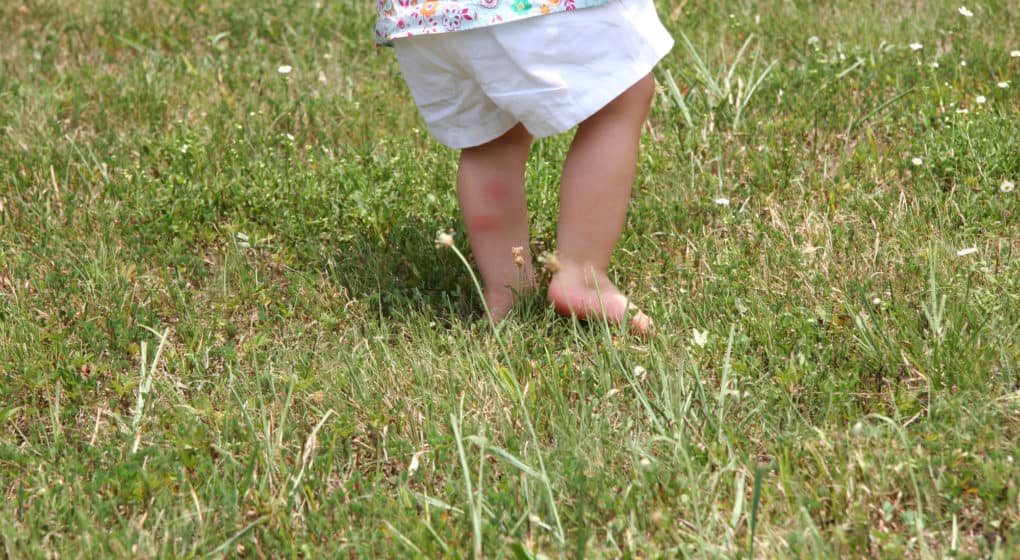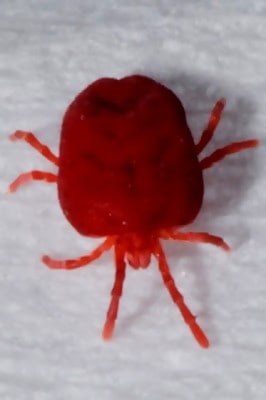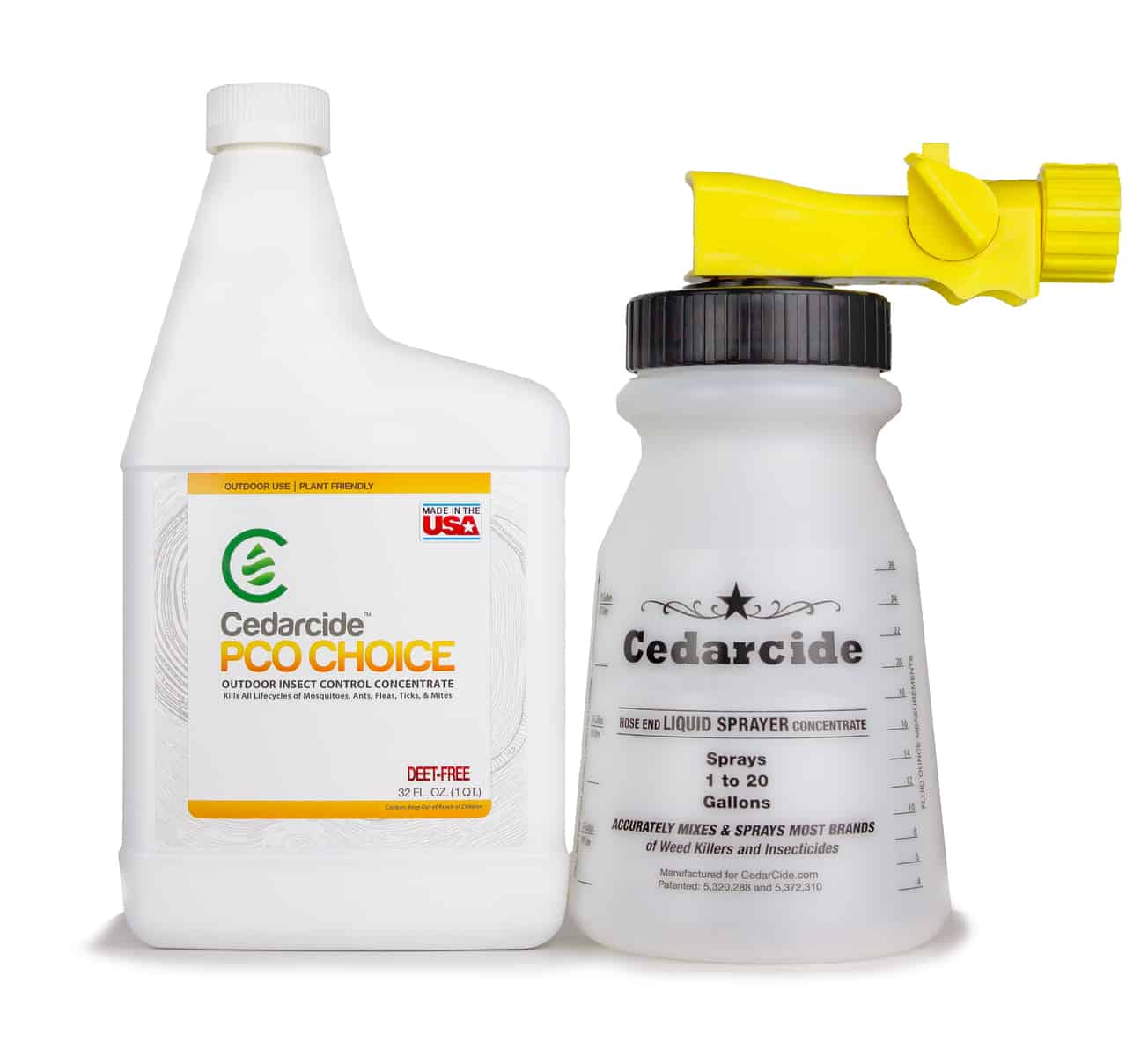
Picture this. You are out on a stroll or playing with your kids in the park when suddenly, your leg breaks out in tiny red spots which start to itch. You’ve just been bitten by a chigger.
These tiny red bugs are merely 1/150th of an inch in length. In other words, you won’t see one before it bites you and leaves you scratching like crazy.
What Are Chiggers?
What do chiggers look like you ask? Chiggers are little red bugs that are barely visible to the naked eye. The younger mites have 6 legs while adults have 8 legs apiece. These bugs frequent humid environments and vegetation that grows low to the ground. In other words, if you brush past a bush that hosts these annoying critters, you may become their (unwilling) second host so to speak.

Red Chigger
Since these vibrant insects are the larvae of mites, they are also known as harvest mites and scrub mites (Source). Even though they don’t carry diseases or feed on blood, these small red bugs use enzymes to dissolve skin cells which cause itchy rashes (Source).
What do chigger bites look like? They look like tiny clusters of small vibrantly red dots peppering the skin. However, contrary to popular belief, chiggers don’t burrow into the skin and live there.
When a chigger bites, it injects enzymes into the skin of its host which actually disintegrates or digests the tissue. The affected part of the skin hardens and a stylostome or a feeding tube develops there which the insect uses to feed for a couple of days.
Think of the stylostome as a straw that a chigger uses to feed. When it latches on, this mite keeps injecting saliva into the skin to make it react and keep that tiny channel open as it drinks its fill (Source).
These small mites are usually found in small clusters and migrate the same way. In other words, a friend of yours may get a whole bunch of chiggers on their body while you don’t get a single one even if both of you brush through the same host plant.
Getting Rid of Chiggers
Needless to say, these pesky critters can ruin a picnic or a solitary hike and make you miserable till the itching stops. The good news is that you don’t have to suffer for long.
Here are some tips that can help:
1. How to get rid of chiggers on the skin
Take a hot shower or bath immediately
When you discover chigger bites on your skin or feel itchy, take a warm shower or bath immediately! Rub your entire body with shower gel using a bath sponge and scrub the affected part of the skin thoroughly. This way, you can dislodge any chiggers that are still hanging on. Scrub yourself from head to toe as well. Chiggers tend to migrate, so you may have more to contend with than you realize.
Brush yourself off
Chiggers don’t latch on immediately after they land on your skin. Plus, since we don’t have fur, they are unable to get a good grip on us. To hang on, they migrate to areas where our clothing is tightest such as sleeves or waistbands (Read More). So when you are outdoors or camping for instance, brush yourself from top to bottom every half hour to knock them off.
2. How to get rid of chiggers in your house
Vacuum regularly
Like most pests, chiggers enter a home by latching onto people and pets. While you cannot control how they get in your home, you can get rid of chiggers by vacuuming regularly. Pay special attention to carpets and especially the welcome mat outside your door. Plus, use the small vacuum attachments to clean between cushions and large furniture (Source).
Clean the house with scalding hot water
To remove chiggers, clean your home with scalding hot water (up to 120°F). Clean each corner as thoroughly as possible to remove all traces (Source).
3. How to get rid of chiggers on your pets
Trying to figure out how to treat chigger bites in pets?
Use oatmeal
Are there chiggers on your dog? Use an oatmeal bath. All you need to do is cook some quick oats and rub them all over your pet. Do this outside or in your bathtub to avoid a mess and then rinse. The oatmeal will sooth itchy skin and give them relief (Source).
Use Aloe
If you have an Aloe Vera plant, you can use that to treat chigger bites on dogs or any other pets as well. Cut off a leaf with a sharp knife, then cut a third off from the top, remove the spines, slice away the skin on the leaf on a cutting board, and scoop out the gel using your knife. Scrub the clear Aloe Vera gel all over your pet and rinse (Source). Think of it as an all natural dog chigger repellant. However, since the gel can be a bit toxic for animals, use it as a last resort and make sure your dog has a cone on its head so it can’t lick the gel.
4. How to get rid of chiggers in your yard
Use powdered soil sulfur
If chiggers have infested your yard, you can get rid of them by sprinkling powdered sulfur on it. However, try not to overdo it or you may kill the grass. If you are pulling weeds in your yard, rub some of it on your hands first so you can keep chiggers at bay.
Spray the yard with insecticide
Chiggers usually nest in wood chips, overgrown grass, briar patches, or any place that is shaded and moist. This also includes freshly cut grass. To get rid of chiggers, you need to spray your entire yard with insecticide. That does not have to mean chemicals though. Our top recommendation for getting rid of most insect pests is cedar oil.
Top Products for Getting Rid of Chiggers
Cedarcide PCO
Cedar oil is well known to be an excellent natural pesticide for ticks and chiggers are a close cousin. Cedarcide PCO is formulated for lawn and garden use but they also have products that you can apply directly to clothes or even skin. Cedar oil is non-toxic to humans AND to beneficial insects like bees and butterflies.
Defense SC
How to kill chiggers and make sure you’ve seen the last of them? The answer lies in spraying Defense SC via a pump sprayer. Use it every 2 weeks on affected areas in your home. The product is completely odorless and is safe enough to be sprayed on carpets, rugs, couches, and even mattresses.
EcoVia G
EcoVia G is a great chigger control product for yards that provides both quick control and prevents these pesky critters from returning. It can be used for both yard and soil treatment as well as wooded areas.
Chiggers vs. Clover Mites
| Chigger | Clover Mite |
|---|---|---|
Size | 0.4 mm | 1 mm |
Habitat | Brush thickets, blackberry patches and margins at the edge of a wooded area | Sidewalks, stone or concrete walls, and exterior of houses |
Bites | Causes itch and rash, and turn skins red | Harmless |
Chigger Bites
Signs/symptoms - How to identify bites
Chigger bites are bright red in color and are in the form of raised bumps each with a bright red dot at the center. Since these mites live in clusters, you may be bitten by more than one at a time. If you start to itch, look for these red clusters around your waistband, ankles, or any area on your body where your clothing is tightest.
Home Remedies for Chigger Bites
Essential Oils for Chiggers - Use Lavender Oil
Lavender oil is one of the best essential oils for chigger bites. That’s because it is an anti-inflammatory and acts as a mild sedative which can relieve the itch and discomfort of a chigger bite. Just mix with a carrier oil and rub it on the affected part of the skin to make it work. There are also other essential oils for chiggers that you can use.
Take an antihistamine
Most of the itchiness that is associated with a chigger bite is due to histamines which are released from dissolved skin cells (Source). Taking antihistamines such as Benadryl can give you relief from chigger bites. It can even stop an itch in its tracks.
How to Prevent Chigger Bites
Wear long sleeves and long pants – When you go outdoors, make sure your clothing covers you from top to bottom. This way, chiggers will not be able to get access.
Take a warm shower or bath
When you return home from a camping trip, fishing, or a hike, take a warm shower or a steaming hot bath immediately. Scrub yourself from top to bottom to dislodge any chiggers that may have latched on.
Avoid chigger infested areas
Chigger larvae thrive in tall grass, weeds, wooded lots, pastures and meadows. If you cannot avoid these areas, take the afore-mentioned precautions to prevent these mites from infesting your home.
FAQ
Can chiggers live in your bed?
No, they cannot. These microscopic pests need a warm body to feed on so they can grow into adults (Source). However, they can fall on the bed from an infested pet or individual.
Can chiggers live in your couch and carpet?
Not really though they may hang out in both for a while. However, if they cannot find a warm host to feed on, they will eventually die. Deep cleaning with hot water (above 100°F or more) can help you get rid of them (Source).
Do dogs get chiggers?
Yes they can. In their larval stage, chiggers feed on a variety of animals and if your dog encounters them, they will latch on and start to feed (Source).
How long can chiggers live on clothes?
If chigger-infested clothing is not washed with warm water and is worn frequently, chiggers may remain on their host for 50 days. This is how long their lifecycle is (Source)
Conclusion
A chigger infestation can be a pesky problem but now that you know how to get rid of them and the god-awful itching they cause, you can breathe easy. Do you have any tips on how to get rid of chiggers and keep them away from your home and pets? Share your answer by commenting below and share the article if you loved it.



